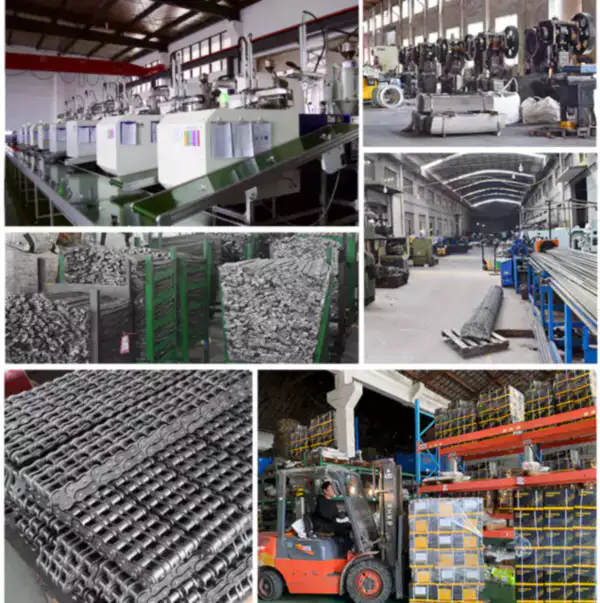Installing gripper chains can be a complex process. If not done properly, it can lead to costly repairs and unplanned downtime. This article will explore the most common mistakes made when installing gripper chains and how to avoid them.
Failure to Properly Align the Gripper Chain
One of the most common mistakes made when installing gripper chains is failure to align the chain properly. Misaligned chains can cause excessive wear on the sprockets and chain, leading to premature failure. To avoid this, use precision alignment tools to ensure the chain is straight and parallel to the sprockets.

Using the Wrong Tension
Another common mistake is using the wrong tension for the gripper chain. Chains that are too tight can cause excessive wear and damage the bearings, while chains that are too loose can cause the chain to jump off the sprocket. To avoid this, follow the manufacturer's recommended tension specifications.

Not Lubricating the Chain
Gripper chains require proper lubrication to function properly. Without proper lubrication, chains can wear prematurely and cause unnecessary downtime. Use a high-quality lubricant and follow the manufacturer's recommended lubrication schedule.

Incorrect Chain Length
Using the incorrect chain length is another common mistake made when installing gripper chains. Chains that are too long can sag and cause excessive wear, while chains that are too short can bind and cause the chain to jump off the sprocket. To avoid this, measure the length of the chain accurately and follow the manufacturer's recommendations on chain length.
Improper Installation of the Chain
Improper installation of the chain can lead to premature failure. Make sure to follow the manufacturer's recommended installation procedures, including proper fastening of the chain and proper alignment of the sprockets.
Gripper Chains Purchasing Guide
| Parameter | Description |
|---|---|
| Chain Type | Choose the right type of chain for your application based on the load and speed requirements. |
| Chain Pitch | Choose the appropriate chain pitch based on the application's load and speed requirements. |
| Chain Length | Measure the length of the chain accurately and follow the manufacturer's recommendations on chain length. |
| Material | Choose the appropriate material for the chain based on the application's environment. |
| Lubrication | Choose the appropriate lubrication for the chain based on the application's environment. |
Sprockets for Gripper Chains
Sprockets are an essential component of gripper chains, and they must be carefully selected to ensure optimal performance. The right sprockets can help improve the overall performance and efficiency of the gripper chain. At our company, we offer a full range of sprockets that are specifically designed to work with our gripper chains. Our sprockets are made from high-quality materials and are precision-engineered for maximum durability and performance.

Our chain sprockets are available in a variety of sizes and configurations to meet your specific needs. We also offer custom sprockets that are designed to meet your exact specifications. Our sprockets are precision-manufactured to ensure maximum performance and reliability, and we stand behind every product we sell.

Our Advantages
- We are a leading manufacturer of high-quality gripper chains.
- We offer a full range of sprockets that are specifically designed to work with our gripper chains.
- We use only the highest-quality materials and precision-manufacturing techniques.
- We offer custom solutions to meet your specific needs.
- We stand behind every product we sell with a commitment to quality and customer satisfaction.
Q&A
Q: What is the maximum speed for a gripper chain?
A: The maximum speed for a gripper chain will depend on the specific chain type and the application's load requirements. Check with the manufacturer for specific speed recommendations.
Q: Can gripper chains be used in harsh environments?
A: Yes, gripper chains can be used in harsh environments. However, it is important to choose the appropriate material and lubrication for the chain based on the application's environment.
Q: How often should gripper chains be lubricated?
A: Gripper chains should be lubricated according to the manufacturer's recommended schedule. In general, chains should be lubricated at least once a month, but more frequent lubrication may be required for heavy or high-speed applications.
Edited by Zqq.
